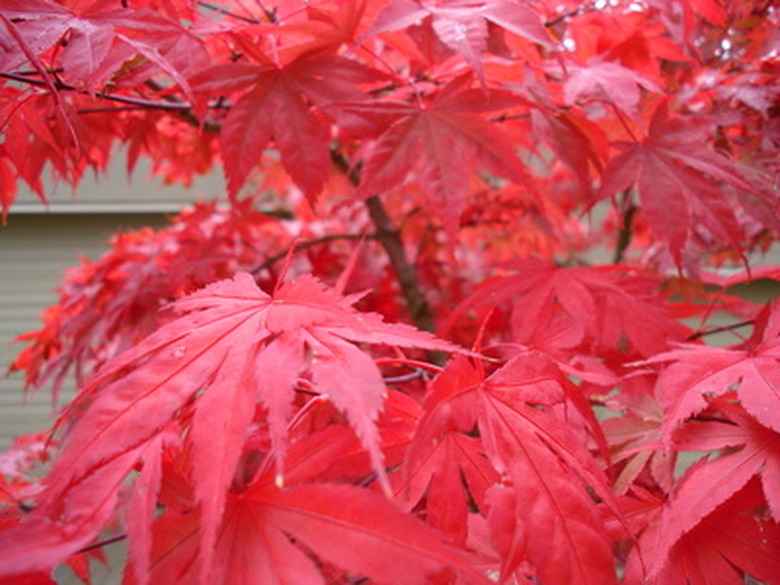How To Keep Japanese Maple Trees Small
Tip
Plant Japanese maples in partially shaded areas as specimen trees or in containers. They need well-drained, acid soil and consistent, light moisture. Japanese maples grown in full sun suffer from leaf scorch, especially in warm climates, according to the University of Florida Extension website.
Warning
Never remove more than one-fifth of a Japanese maple's canopy, according to Fine Gardening magazine. Doing so will encourage unsightly new growth and stress the tree.
Japanese maples, depending on the variety, are naturally small, shrub-like trees. Most grow 8 to 15 feet high, although larger varieties may reach 20 to 50 feet high. Very small varieties are grown in containers as bonsai specimen. Minor pruning may control the size of Japanese maple somewhat, but the best way to manage its size is by choosing a suitable variety. Japanese maple's many fine qualities generally make it worth finding space for in the yard. It produces lovely, lacey or lobed foliage with brilliant fall color. The gray limbs grow in interesting layered, horizontal forms similar to that of the flowering dogwood.
Step 1
Buy compact varieties that grow to under 10 feet high. Try Burgundy Lace, Crimson Queen or Inaba Shidare, according to Clemson University Extension website.
Step 2
Prune mature trees moderately in winter or summer, advises Cass Turnbull of Fine Gardening magazine to enhance their natural shape.
Step 3
Delay pruning young trees. Pruning young trees to control growth will actually encourage faster growth and result in spindly, whip-like branches.
